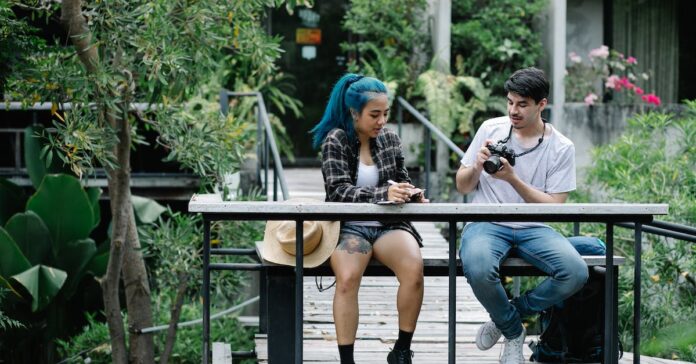Are you not happy with the way your photographs are coming out? Follow the tips in this article for advice on how to become a better photographer and improve your photos.
A good photography tip that can help you is to not be afraid of getting your work critiqued by other people. Putting your work out there can leave you feeling vulnerable, but it’s very valuable to know how other people perceive your work. It can help you improve a lot.
People often believe that bright, sunny days are perfect for taking pictures. However, you are almost guaranteed to get flawed images if you take your shots in the direct glare of the sun. Direct sun will cast shadows and cause glares but it will cause highlights that are uneven and your subjects may squint. If it is possible, shoot outdoors only in late evening light or the very early morning.
The foreground is much more noticeable than the background in a photograph. Create a nice foreground in your shot to make your picture look more deep and to frame in more intimately.
Hold your camera properly. You should hold it on one side and use your other hand to support the lens. Place your hand under the lens instead of over it. When you place your hands this way, you are supporting the camera instead of applying pressure, which could make your pictures blurry.
Get an external flash unit with a diffuser instead of the built-in flash feature. These built-in flashes often make a picture look very harsh. An external flash unit gives a more natural aspect to your photographs and allows you to edit them without the noise you get when you use another kind of flash.
Take pictures of the souvenirs you purchased when you travel. You could put the souvenir next to the store you made the purchase. You could even frame it next to your hotel pool. In this way, you can re-live the experiences that tell the story of your trip and the mementos you chose to bring back home with you.
When photographing young children, time and patience is your best friend. Children are taught to “say cheese” whenever a camera is focused on them, inevitably creating artificial, fake smiles – or worse. Ideally, a child will become comfortable being photographed when the pressure to “perform” is removed. Simply encourage them to go about their normal activities and then follow them around with your camera, clicking when they naturally smile or are obviously enjoying their surroundings.
When working around subjects that are moving a lot or are totally in action, you need to focus on capturing the moments by keeping your trigger down. These kinds of moments can not be recreated and there are no do-overs. Keep your eye on the areas at all times and keep shooting.
Play with lens distortion. Most photographs use portrait lenses or zoom lenses to focus on an object, and use a wide-angle lens for landscapes and such. By using a lens for a different use than its intended one, you will get a very original photograph. Do not let this become your style: learn when you can use an original lens.
Pay careful attention to backgrounds when composing your photographs. Jumbled, messy rooms can ruin an image and prevent your subject from standing out. Also, even the smallest item within range of the snapshot can be a distraction, taking away from the central focus. Always make a quick scan of the room or landscape, then remove items that will detract from an otherwise perfect shot.
A lot of people make the mistake of wearing white to get their picture taken. Most photographs will use the auto-focus setting and let the camera interpret what is in the frame. White clothes will often end up looking like a blank space.
Always stabilize your hands when taking pictures. If a tripod is not handy rest your arms on a table, wall or even another person to get a clear shot. Also, holding your breath while taking the picture will keep the camera from moving and assure the picture you need.
Watch for fixed patterns in the pictures that you take, and make the most of them. Patterns are rather interesting to ponder in a photograph. Sometimes, you can even integrate the pattern into your shot, either by taking it at a new angle or perspective, adding a dynamic element.
Set your camera to the lowest native ISO it has. This means that your camera will produce a darker image, which can be edited in a photo program with less noise than a picture taken at a different ISO range. This gives you more flexibility to edit your pictures to your satisfaction.
Good photographers may have been born with a specific talent, but they also work hard to learn about new techniques. If you want to improve your photography skills, this article can help out.

